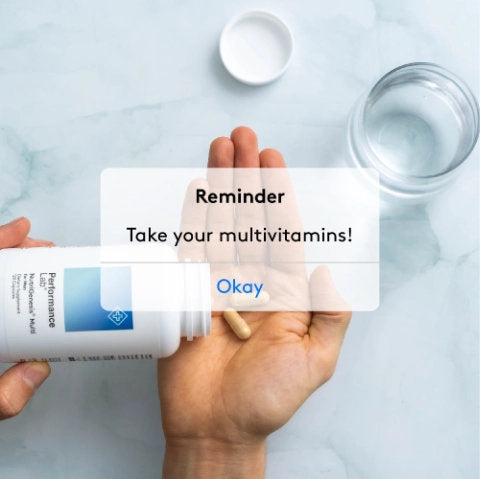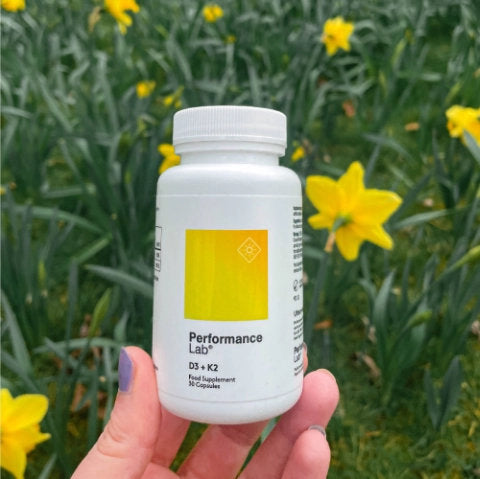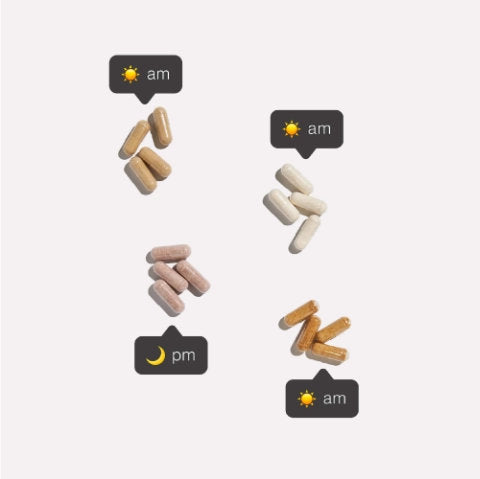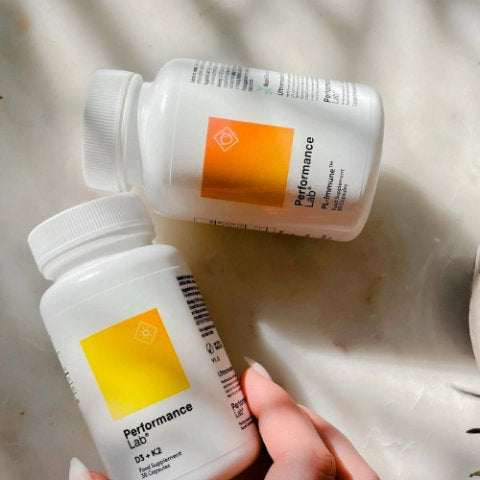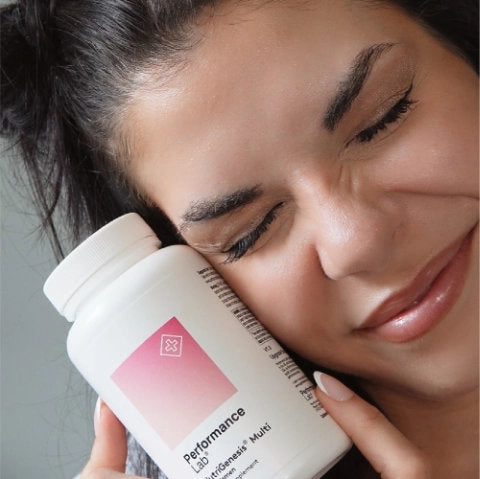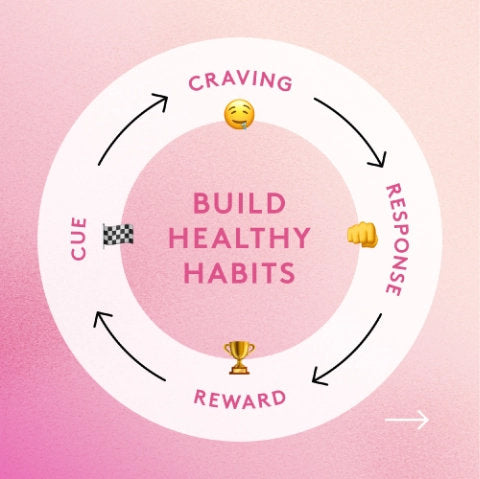Vitamin C is an essential water-soluble nutrient widely distributed in many fruits and vegetables but is also available in supplemental form. It’s involved in everything from skin health and bone strength and integrity to immune function and antioxidant defenses, so getting your daily intake is important.
Although vitamin C deficiency is relatively rare nowadays, people who consume a diet devoid of fresh produce, have an underlying health condition, are smokers, or don’t have access to supplements can still be affected by a vitamin C deficiency.
Symptoms of a severe vitamin C deficiency generally take months to develop, but there are some tell-tale signs to look out for. Keep reading for the top 10 vitamin C deficiency signs and symptoms.
What Is Vitamin C And What Does It Do?
Vitamin C is an essential vitamin found in high concentrations in many fruits and vegetables.
It’s part of the water-soluble nutrients that are not stored in the body, so when in excess, it’s excreted in the urine. Humans lack the enzyme gulonolactone oxidase, which synthesizes vitamin C, so it cannot be produced in the body and must come through diet or supplementation 1.
Although most people associate vitamin C with immune health, it plays several critical functions in the body and is involved in 2-7:
- Antioxidant defenses and regeneration
- Collagen production
- Immunity
- Wound healing
- Iron absorption
- Bone health
- Gut Health (IBS)
Luckily, vitamin C isn’t one of the more common nutrient deficiencies, but levels are depleted within three to twelve weeks if consumption stops 8.
On top of that, several factors can impair the absorption and function of ascorbic acid, so consuming plenty of fresh fruits and vegetables is key to preventing a vitamin C deficiency.
What Causes A Vitamin C Deficiency?
Although small amounts of vitamin C are found within leukocytes, the adrenals, and the pituitary, vitamin C is water-soluble and is not stored in the body, meaning plasma concentration is primarily related to recent dietary intake 8.
Roughly 1,500 mg of vitamin C is stored in the body, and when concentrations drop below 350 mg, signs of a deficiency will start to develop.
Generally speaking, a vitamin C deficiency is caused by inadequate dietary intake, but several other risk factors can contribute 8:
- Alcoholism (or high alcohol intake)
- Babies only fed cow's milk
- Low fruit and vegetable intake (poor diet)
- Smoking
- Eating disorders
- Type 1 diabetes
- GI disorders (inflammatory bowel disease, Crohn's, ulcerative colitis, etc.)
- Iron overload
- Restrictive diets or food allergies
Top 10 Symptoms Of A Vitamin C Deficiency
Bumpy skin
If your skin is feeling rough and bumpy, it could be a sign you’re running into vitamin C deficiency territory.
Because vitamin C is involved in collagen production—a protein abundant in connective tissues like skin, hair, bones, joints, and blood vessels—low levels can lead to a condition called keratosis pilaris 9.
It forms “chicken skin” on the back of the upper arms, thighs, or butt due to a buildup of keratin inside the pores 10. Keratosis pilaris due to a vitamin C deficiency generally appears after 3-5 months of insufficient intake and resolves with vitamin C supplementation 11.
Coiled body hair
Lack of vitamin C can also cause body hairs to grow in a coiled shape due to defects that develop in the hair's protein structure during growth 12.
Corkscrew-shaped hairs are one of the primary signs of a vitamin C deficiency, and while they may not be super obvious, damaged hair typically falls out of breaks more often 13.
Red hair follicles
Hair follicles on the skin’s surface contain tiny blood vessels that bring oxygen and nutrients to the area.
When vitamin C intake is insufficient, these blood vessels become fragile and can easily break, resulting in small red spots around hair follicles.
This condition is known as perifollicular hemorrhage—but it’s more common with a severe vitamin C deficiency 12, 13. Supplementation will generally resolve the issue within a couple of weeks.
Spoon-shaped fingernails
If you look at your nails and they’re thin, brittle, and concave, it could be a sign of a vitamin D deficiency.
Spoon-shaped nails are more common with an iron deficiency, but they’ve also been linked to low vitamin C 12, 14. You may also notice redness in the nailbeds—this is called a splinter hemorrhage—that appears during vitamin C deficiency as a result of weakened blood vessels.
Dry skin
Dry, scaly skin can be a sign of several nutrient deficiencies. Still, because the skin's epidermis (outer layer) contains large amounts of vitamin C, a deficiency can leave it dry and dull 15.
Vitamin C is essential for maintaining skin health thanks to its antioxidant properties—it protects the skin from free radicals and oxidative damage from sun exposure and pollutants like cigarette smoke or ozone 16, 17.
Vitamin C is also necessary for collagen production, which supports the strength and integrity of the skin, and keeps it looking youthful and supple 18. A vitamin C deficiency can therefore lead to dull, saggy skin with more fine lines and wrinkles.
Easy bruising
Easy bruising is typically associated with a vitamin K deficiency but can also be a sign of vitamin C deficiency. Bruises occur when blood vessels below the skin rupture and the blood leaks to the surrounding tissues.
Since vitamin C is required for collagen production and collagen is essential for the integrity of blood vessels, vitamin C deficiency can cause weak blood vessels 19. These bruises can cover large areas of the body or appear as tiny purple dots under the skin 12, 20.
Swollen and achy joints
Joints are comprised of large amounts of collagen-rich connective tissues, and because of vitamin C’s role in collagen synthesis, a vitamin C deficiency could impact joint health and function.
Several studies show that joint pain is associated with low vitamin C intake, potentially due to impaired collagen formation. Still, some research also suggests that vitamin C deficiency can lead to inflammation of the joints due to impaired antioxidant defenses 21, 22.
Weak bones and impaired bone formation
Although vitamin C isn’t generally associated with bone health, getting enough is equally essential to maintain strong and healthy bones.
A vitamin C deficiency has been linked to an increased risk of fracture and osteoporosis due to its role in collagen production, which is essential for the bone matrix and to prevent brittle bones 23-25.
Vitamin C also scavenges and neutralizes free radicals that could be detrimental to bone health.
Weakened immunity
Vitamin C and immune health is a biggie—and it’s what most people know the nutrient for.
It has been shown to accumulate in various immune cell types to prevent infection and destroy disease-causing pathogens 5, 26. Low vitamin C status or a vitamin C deficiency has been linked to weakened immunity and susceptibility to illness and infection.
Poor wound healing
Lastly, poor wound healing is another sign of vitamin C deficiency. Again, due to its role in collagen formation, low vitamin C levels can impair the speed at which new skin forms and, therefore, the rate of wound healing 27.
If it's a severe deficiency, it could even lead to the reopening of wounds, which increases the risk of infection 12. That said, slow wound healing isn’t one of the primary signs of a deficiency and isn’t typically seen for months after a deficiency has started.
Best Sources Of Vitamin C
So, how do you prevent a vitamin C deficiency? Since vitamin C is a water-soluble nutrient that cannot be produced or stored in the body, it must come through diet or vitamin C supplements daily to maintain adequate intake levels.
However, if you want to avoid a severe deficiency, a balanced diet with an adequate intake of high vitamin C foods is key.
Some of the best vitamin C-rich foods include:
- Acerola cherry
- Rosehips
- Guava
- Red bell peppers
- Blackcurrants
- Kiwi
- Lemon
- Orange (and other citrus fruits)
- Lychee
- Strawberry
- Papaya
- Broccoli
- Parsley
Alternatively, dietary supplementation is another effective route for maintaining vitamin C levels—and if you’re looking for an immune-boosting super stack, try Performance Lab NutriGenesis Multi + PL-Immune.

They’re ultra-modern nutritional supplements designed to restore immune defenses and optimize body function for peak daily performance.
If you’re planning to take a pure vitamin C supplement to ensure you're getting enough vitamin C, do note that high-dose vitamin C can have a laxative effect, so it’s recommended not to exceed 2,000 mg daily to avoid gastrointestinal distress like abdominal cramps, diarrhea, and nausea.
References
- Naidu KA. Vitamin C in human health and disease is still a mystery? An overview. Nutr J. 2003;2:7.
- Padayatty SJ, Katz A, Wang Y, et al. Vitamin C as an antioxidant: evaluation of its role in disease prevention. J Am Coll Nutr. 2003;22(1):18-35.
- Brzezińska O, Łukasik Z, Makowska J, Walczak K. Role of Vitamin C in Osteoporosis Development and Treatment-A Literature Review. Nutrients. 2020;12(8):2394.
- DePhillipo NN, Aman ZS, Kennedy MI, Begley JP, Moatshe G, LaPrade RF. Efficacy of Vitamin C Supplementation on Collagen Synthesis and Oxidative Stress After Musculoskeletal Injuries: A Systematic Review. Orthop J Sports Med. 2018;6(10):2325967118804544.
- Carr AC, Maggini S. Vitamin C and Immune Function. Nutrients. 2017;9(11):1211.
- Moores J. Vitamin C: a wound healing perspective. Br J Community Nurs. 2013;Suppl:S6-S11.
- Lynch SR, Cook JD. Interaction of vitamin C and iron. Ann N Y Acad Sci. 1980;355:32-44.
- Maxfield L, Crane JS. Vitamin C Deficiency. . In: StatPearls . Treasure Island (FL): StatPearls Publishing; 2022 Jan-. Available from: https://www.ncbi.nlm.nih.gov/books/NBK493187/
- Bsoul SA, Terezhalmy GT. Vitamin C in health and disease. J Contemp Dent Pract. 2004;5(2):1-13.
- Hwang S, Schwartz RA. Keratosis pilaris: a common follicular hyperkeratosis. Cutis. 2008;82(3):177-180.
- Jen M, Yan AC. Syndromes associated with nutritional deficiency and excess. Clin Dermatol. 2010;28(6):669-685.
- Hirschmann JV, Raugi GJ. Adult scurvy. J Am Acad Dermatol. 1999;41(6):895-910.
- Lessing JN, LaMotte ED, Moshiri AS, Mark NM. Perifollicular haemorrhage with corkscrew hair due to scurvy. Postgrad Med J. 2015;91(1082):719-720.
- Cashman MW, Sloan SB. Nutrition and nail disease. Clin Dermatol. 2010;28(4):420-425.
- Pullar JM, Carr AC, Vissers MCM. The Roles of Vitamin C in Skin Health. Nutrients. 2017;9(8):866.
- Podda M, Traber MG, Weber C, Yan LJ, Packer L. UV-irradiation depletes antioxidants and causes oxidative damage in a model of human skin. Free Radic Biol Med. 1998;24(1):55-65.
- Ou-Yang H, Stamatas G, Saliou C, Kollias N. A chemiluminescence study of UVA-induced oxidative stress in human skin in vivo. J Invest Dermatol. 2004;122(4):1020-1029.
- Duarte TL, Cooke MS, Jones GD. Gene expression profiling reveals new protective roles for vitamin C in human skin cells. Free Radic Biol Med. 2009;46(1):78-87.
- Pimentel L. Scurvy: historical review and current diagnostic approach. Am J Emerg Med. 2003;21(4):328-332.
- Fraser IM, Dean M. Extensive bruising secondary to vitamin C deficiency. BMJ Case Rep. 2009;2009:bcr08.2008.0750.
- Algahtani HA, Abdu AP, Khojah IM, Al-Khathaami AM. Inability to walk due to scurvy: A forgotten disease. Ann Saudi Med. 2010;30(4):325-328.
- Ripani U, Manzarbeitia-Arroba P, Guijarro-Leo S, Urrutia-Graña J, De Masi-De Luca A. Vitamin C May Help to Reduce the Knee's Arthritic Symptoms. Outcomes Assessment of Nutriceutical Therapy. Med Arch. 2019;73(3):173-177.
- Fain O. Musculoskeletal manifestations of scurvy. Joint Bone Spine. 2005;72(2):124-128.
- Morton DJ, Barrett-Connor EL, Schneider DL. Vitamin C supplement use and bone mineral density in postmenopausal women. J Bone Miner Res. 2001;16(1):135-140.
- Simon JA, Hudes ES. Relation of ascorbic acid to bone mineral density and self-reported fractures among US adults. Am J Epidemiol. 2001;154(5):427-433.
- Wintergerst ES, Maggini S, Hornig DH. Contribution of selected vitamins and trace elements to immune function. Ann Nutr Metab. 2007;51(4):301-323.
- Galimberti F, Mesinkovska NA. Skin findings associated with nutritional deficiencies. Cleve Clin J Med. 2016;83(10):731-739.






